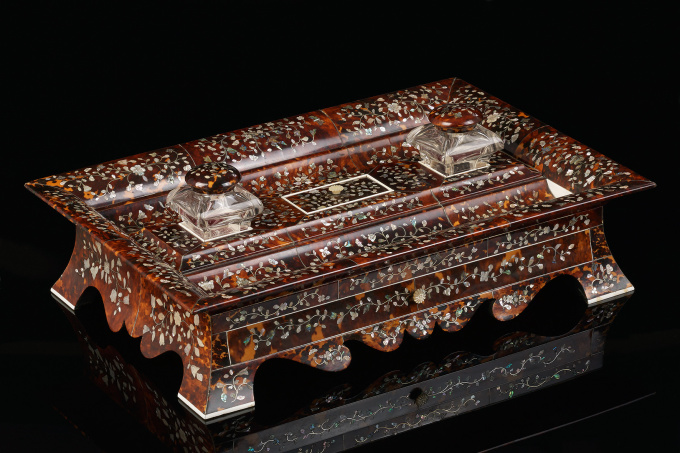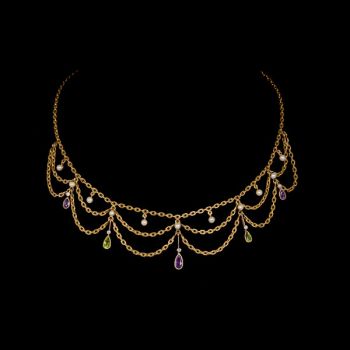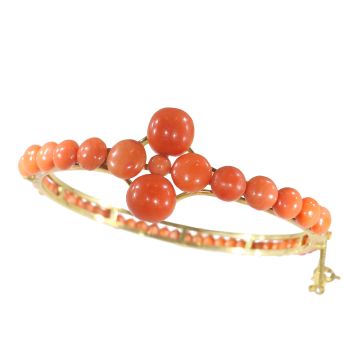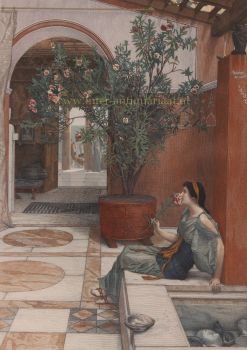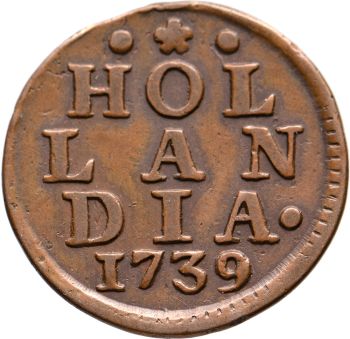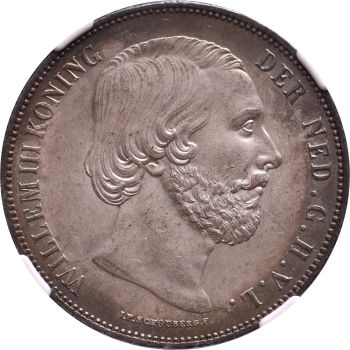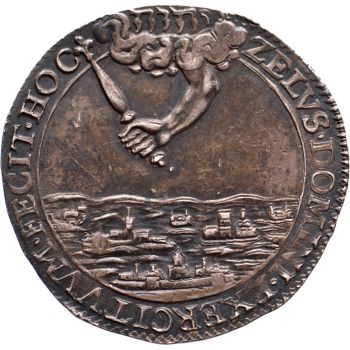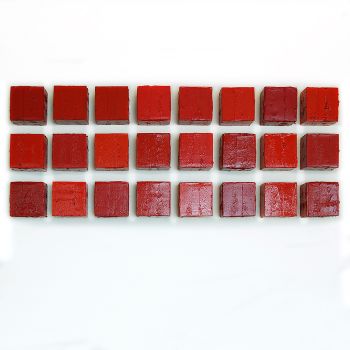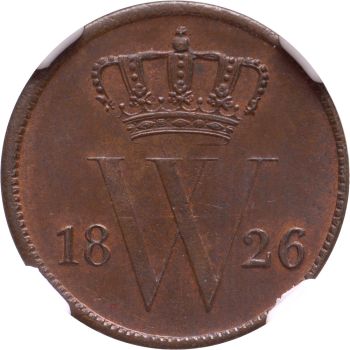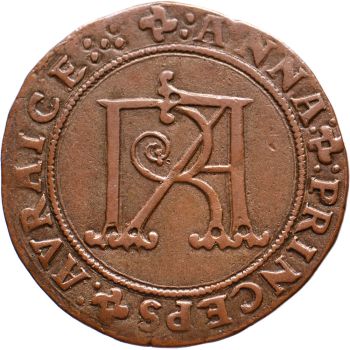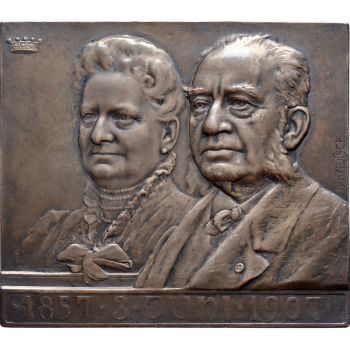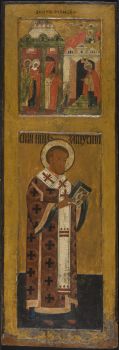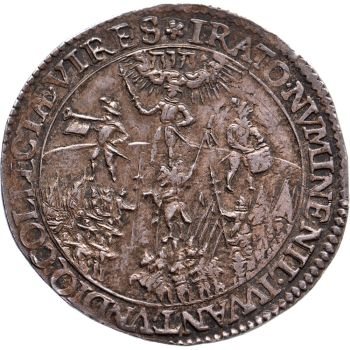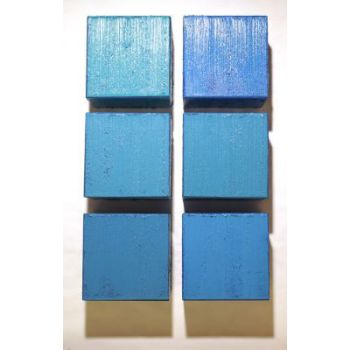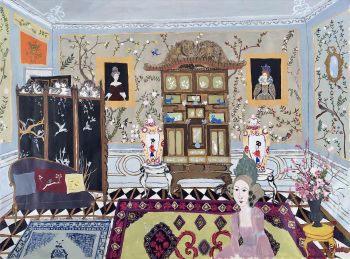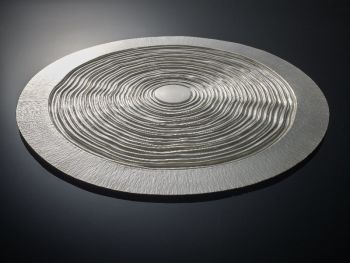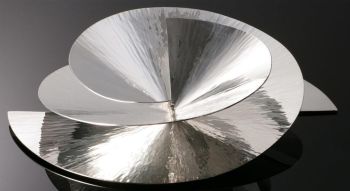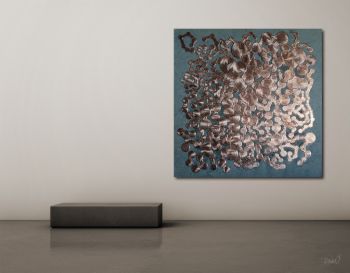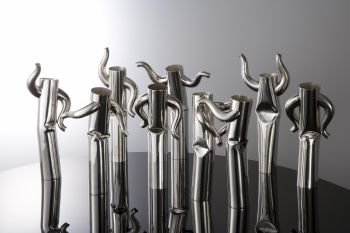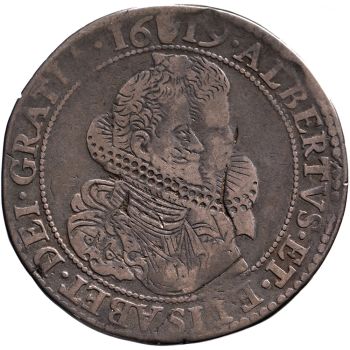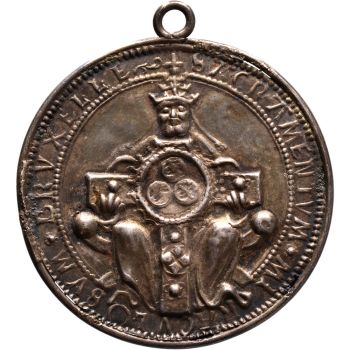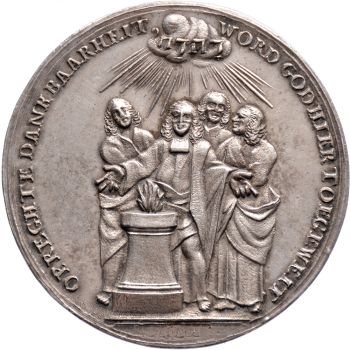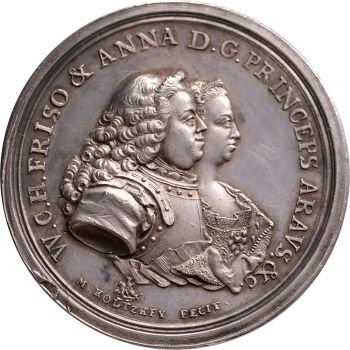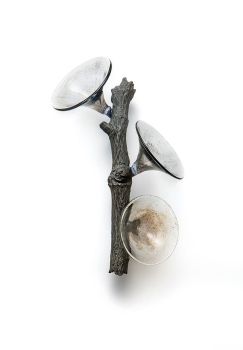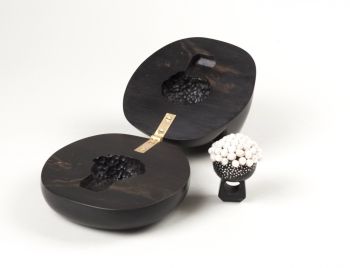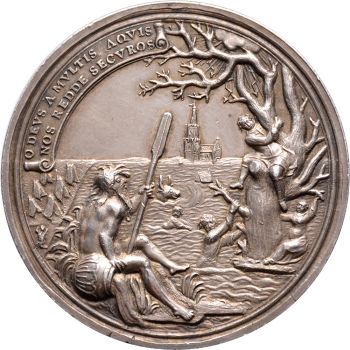Early Victorian Inkstand 1840
Unknown artist
Tortoise shellPearlMother of PearlSilver
11 ⨯ 45 ⨯ 30 cm
Currently unavailable via Gallerease
- About the artworkA very fine early Victorian inkstand with a refined decoration of mother of pearl and silver on a background of tortoise shell. The inkstand contains two crystal inkwells with lids that match the overall decoration. In-between the inkwells sits a lidded compartment to store spare nibs. At the front a narrow drawer in solid mahogany with a mother of pearl knob shaped like a flower.
Commonly these type of objects did not bear a signature or marking. In London, however, a father and son firm called Thomas & William Lund of Cornhill, was established in 1804, that was renowned for its tea caddies, inkstands, and jewelry boxes. Their objects were characterized by their refined finishing with silver, tortoise, and ivory accents. Also, a great number of similar objects originated from Birmingham, where companies manufactured goods with mother of pearl inlay on a tortoise shell base, that were delivered to stores in London. Three of these companies presented their products at the Great Exhibition of 1851; Richard Peters & Son, H. Chatwin, and John Hayden, which corroborates these assumptions. - About the artist
It might happen that an artist or maker is unknown.
Some works are not to be determined by whom it is made or it is made by (a group of) craftsmen. Examples are statues from the Ancient Time, furniture, mirroirs, or signatures that are not clear or readible but as well some works are not signed at all.
As well you can find the following description:
•“Attributed to ….” In their opinion probably a work by the artist, at least in part
•“Studio of ….” or “Workshop of” In their opinion a work executed in the studio or workshop of the artist, possibly under his supervision
•“Circle of ….” In their opinion a work of the period of the artist showing his influence, closely associated with the artist but not necessarily his pupil
•“Style of ….” or “Follower of ….” In their opinion a work executed in the artist’s style but not necessarily by a pupil; may be contemporary or nearly contemporary
•“Manner of ….” In their opinion a work in the style of the artist but of a later date
•“After ….” In their opinion a copy (of any date) of a work of the artist
•“Signed…”, “Dated….” or “Inscribed” In their opinion the work has been signed/dated/inscribed by the artist. The addition of a question mark indicates an element of doubt
•"With signature ….”, “With date ….”, “With inscription….” or “Bears signature/date/inscription” in their opinion the signature/ date/ inscription has been added by someone other than the artist
Artwork details
Related artworks
- 1 - 4 / 12
- 1 - 4 / 24
Unknown artist
Russian icon depicting an extended Deesis1600 - 1650
Price on requestKunsthandel H.W.C. Dullaert Icons
1 - 4 / 24- 1 - 4 / 8
- 1 - 4 / 24

